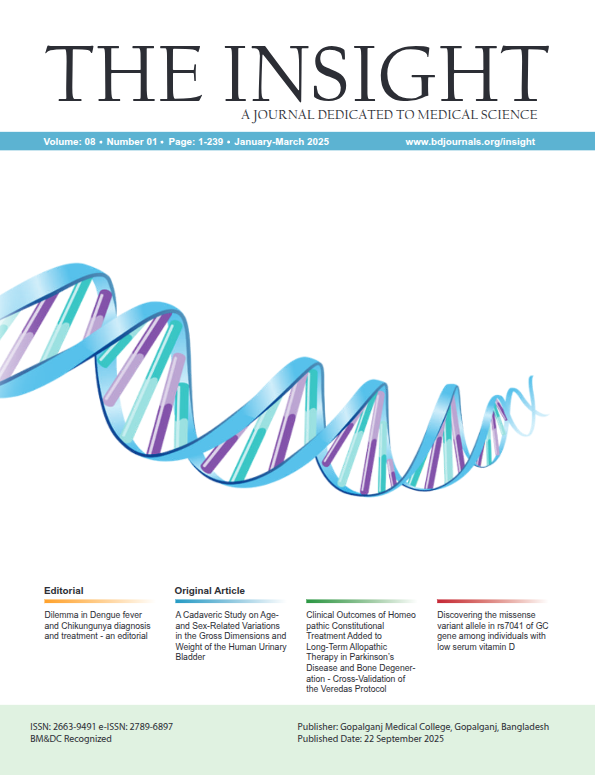Abstract
Background: Urinary tract infections (UTIs) are a very common bacterial infection worldwide, and they are significant contributors to morbidity, healthcare costs, and antimicrobial resistance. The presentation, pathogens, and risk factors vary across populations, which necessitates the availability of local epidemiological information for guiding effective management programs. Objective: The aim of this study was to assess the clinical profile and associated risk factors of UTI. Methods & Materials: This cross-sectional observational study was conducted in the Department of Medicine, Comilla Medical College Hospital (CoMCH), Comilla, Bangladesh from 1st January 2018 to 30th June 2018. Total 100 patients aged more than 12 years fulfilling the clinical criteria of UTI, urine R/M/E shows pus cell>10/HPF, urine culture shows number of colony is ≥ 105 CFU/ml were included in this study. Results: The mean age of patients was 55 ± 18.2 years, and females represented 62% of the cases. The affected age group most frequently was 61–70 years (28%). The most common symptoms were urgency (88%). Common comorbidities included diabetes mellitus (34%) and hypertension (23%). The most common pathogen was Escherichia coli (e. coli) (86%), with a significant association between gender and type of pathogen (P < 0.05). Sexually active (72%), female gender (62%), and advanced age (>60 years) (48%) were the primary risk factors. Conclusion: UTIs among this group were most prevalent among sexually active older women, and the most frequent pathogen was E. coli. The findings emphasize the need for prevention and empirical treatment in light of regional data.

This work is licensed under a Creative Commons Attribution 4.0 International License.
Copyright (c) 2025 The Insight





 PDF
PDF